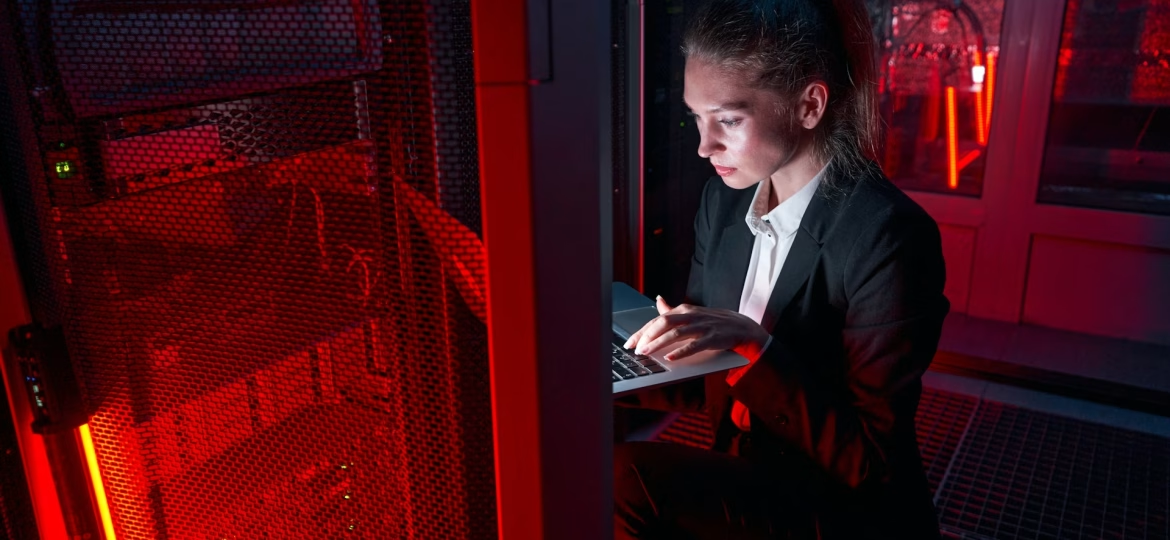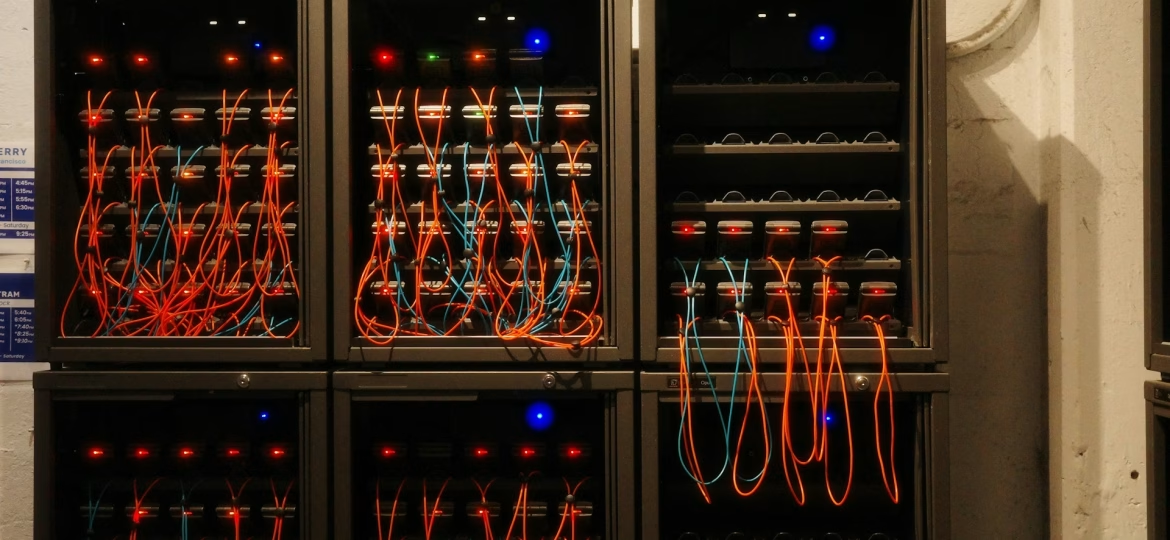Power planning is one of the most overlooked tasks when preparing for colocation. It doesn’t get much attention until systems fail, or until energy bills spike beyond expectation. But the reality is, choosing a data centre isn’t just about space, security, or internet speeds. The power setup is just as important. Every rack, cable, and device you bring into a facility pulls a certain amount of electricity, and if it’s not planned well, problems can show up quickly.
From unexpected downtime to overloaded circuits, poorly managed power often leads to extra costs or performance issues. And with modern setups using denser hardware and more demanding applications, understanding those requirements up front is smart planning. It helps ensure safety, availability, and room for future growth. Whether you’re working with GPU-heavy machines for AI or just running consistent traffic-heavy web apps, proper allocation makes a big difference.
Assessing Your Equipment Needs
Before you move your infrastructure into a data hall, get clear on what you’re bringing. Each type of equipment draws different levels of power, and placing everything in a rack without knowing those numbers is asking for trouble. Some focus-heavy hardware, like GPU servers used in AI training or deep learning processes, can use far more energy than lower-powered, general-purpose servers.
Start by building an equipment inventory. Don’t just list model names—note their power requirements in watts or amps. This info is usually on the manufacturer’s spec sheet or on the equipment label.
A few things to include in your checklist:
– Server make and model
– Estimated power usage at peak and idle
– Number and type of power supplies (single or dual)
– Cooling needs for high-density units
– Power draw per unit if you’re running multiple of the same
For example, if you’re setting up a system with virtual private servers for different departments and a few dedicated GPU servers for AI work, group them accordingly. The GPU units will usually draw more power per server, while the VPS workload will run efficiently on lower resources. Don’t forget peripheral devices too, like switches or backup drives. All of these draw power and need to be counted.
This early step helps you avoid future surprises. It also gives you the details you’ll need to speak with facility teams about rack capacity, breaker limits, or redundancy setups. It sets the groundwork for smarter placement and safer operation later.
Power Density and Rack Allocation
Power density isn’t just tech jargon—it’s a practical way of understanding how much power your gear pulls in the space you’re using. The higher the power density, the more careful you have to be with airflow, cooling, and circuit limits.
Power density is usually measured by how much energy (in kilowatts) is being consumed per rack. A cabinet filled with entry-level servers might draw a bit of power, but one stacked with GPU-based units training large datasets can quickly exceed recommended limits if not properly planned.
Here’s how you can approach it:
1. Add up the peak power requirements of all equipment you plan to place in a single rack.
2. Check whether your facility has a maximum power cap per rack.
3. See if the racks have enough cooling to manage the heat output.
4. Confirm if there’s shared or dedicated power per cabinet.
Data centres often set limits for safety. So if you go over the allowed draw per rack, you may be forced to split workloads across more racks, which takes up space and can impact the budget.
A good practice is to group equipment by similar load profiles. Don’t mix high-draw GPU servers with lighter-use machines in small cabinets unless you’ve calculated the total accurately. Balance the load across racks to avoid tripping breakers or affecting uptime.
It’s also useful to think ahead. If you’re scaling up new applications later, like upgrading your storage for hosted email archives or expanding traffic for a public cloud platform, leave room in your rack plan. That can help you absorb the growth without reconfiguring everything later.
Getting your rack layout and power balance right early on keeps things stable and avoids costly reworks as your needs grow. It also helps your colocation arrangement work smoother overall, with fewer headaches on the facility side and more uptime for your team.
Choosing the Right Power Setup
Colocation facilities give you different options for how your servers get power, and getting the setup right early makes a big difference to performance and reliability. One of the most common decisions is choosing between a single or dual power supply setup. Single power setups are simple but come with risk if the power source fails, your server goes down. Dual power supplies offer redundancy. Each feed connects to a separate circuit, so if one fails, the second keeps everything running.
Another factor? Whether or not your equipment supports dual inputs. Many hosted GPU servers do, especially those used for machine learning jobs or AI model training in public cloud environments, but some lower-end or older machines don’t. Before committing to a dual-power rack, check compatibility.
You’ll also want to consider access to uninterruptible power supplies, or UPS systems. A UPS keeps your infrastructure running when the power dips or fails completely, giving you time to shut things down safely or switch to backup generators. Paired with facility-level generators and circuit breakers, it adds an extra layer of protection.
Things to check when setting up your power feeds:
– Are the power circuits fully independent?
– What type of connectors and amperage does the colocation facility provide?
– Are the feeds metered or included in a flat-rate agreement?
– Do your devices have automatic failover support?
– Is the cabling between power feeds and equipment load-balanced?
Backing up your kit with these layers of support won’t fix poor planning, but it does reduce the chances of unexpected downtime and gives your team more control. Whether you’re running simple VPS hosting or managing clusters that support email queues, power design makes a difference on performance and peace of mind.
Monitoring and Managing Power Consumption
Once the system’s up and running inside the colocation data centre, you’ll need visibility over how much power it’s using. Too many businesses simply set and forget once the setup is installed. But without regular monitoring, energy waste creeps in, and performance issues become harder to trace.
The best place to start is with rack-level monitoring. Many facilities offer remote power usage data through in-built systems that track voltage, current, and even temperature per PDU. These details help spot unusual demand or inefficiencies before they become problems.
There are loads of simple ways to start managing usage better:
– Remove any unused hardware drawing idle power
– Spread high-power jobs across periods of lower demand
– Watch for equipment running hot, as airflow problems often lead to higher energy draw
– Run firmware updates, especially for servers in full-time operation like email hosting and virtual instances
If your business uses GPU servers that train models on tight weekly project cycles, keep an eye on power patterns during these high-performance pushes. This lets you decide when to run tasks to balance costs without slowing down output.
Monitoring tools can also feed into usage-based billing. If you’re running budget-conscious setups such as affordable dedicated servers or managing layered workloads with public cloud integrations, keeping tabs helps you spot peak usage trends and scale or pause as needed.
Make Your Setup Ready for the Future
What works today might not work tomorrow if your infrastructure scales or adds new services. That’s why designing power systems for flexibility makes practical sense. Start by leaving headroom in every rack’s power allocation so high-demand gear can be introduced later without reconfiguring the entire setup.
Stay up to date with energy standards too. Regulations and best practices shift over time. Whether you’re running VPS hosting or dedicated boxes, keeping the system efficient reduces long-term costs.
You might already be planning to expand hosted resources into the cloud or run hybrid applications that combine on-prem hardware with off-site compute tools. Planning your electrical requirements with these moves in mind stops future upgrades from disrupting services or needing downtime.
Here’s what future-proof power setups usually include:
– Space in the circuit for additional loads
– Efficient cooling plans, especially for dense GPU servers
– Compatibility with newer gear that may use different connectors or power types
– Remote reset and monitoring tools
– Redundant feeds and possible upgrade paths
Think of this stage like buying a house. You may not fill all the rooms right away, but it’s good to have that space locked in so expansions don’t turn into rebuilds.
Crafting a Power Efficient Colocation Strategy
Getting your colocation power strategy right starts with understanding what your equipment needs. It continues with good rack-level planning that avoids overloading and includes thoughtful decisions about power redundancy and safety. But it doesn’t stop once everything is turned on. Keeping up with usage patterns, new tools, and your future growth plan helps keep things clean, efficient, and scalable.
Many businesses get pulled into reacting to power problems later, after a service crash or sudden spike in usage. Building an approach that adapts over time while keeping core services stable, from GPU processing to virtual hosting or colocation-based email queues, helps keep your infrastructure smooth and ready for change.
The real advantage of a well-built power plan is that it takes pressure off the team. When energy usage is predictable, performance stays high, issues get caught early, and scaling comes easier. Whether you’re new to colocation or looking to fix messy setups, power is never just a background detail. It’s a daily part of making tech work well.
Finalising your colocation setup is now easier with Binary Racks. If you’re exploring ways to optimise your infrastructure costs while maintaining top-level performance, our solutions for UK based colocation hosting can help support your growth plans. Count on Binary Racks to provide the power flexibility and technical backup your business needs to scale with confidence. Reach out today to see how we can tailor our services to fit your long-term goals.






